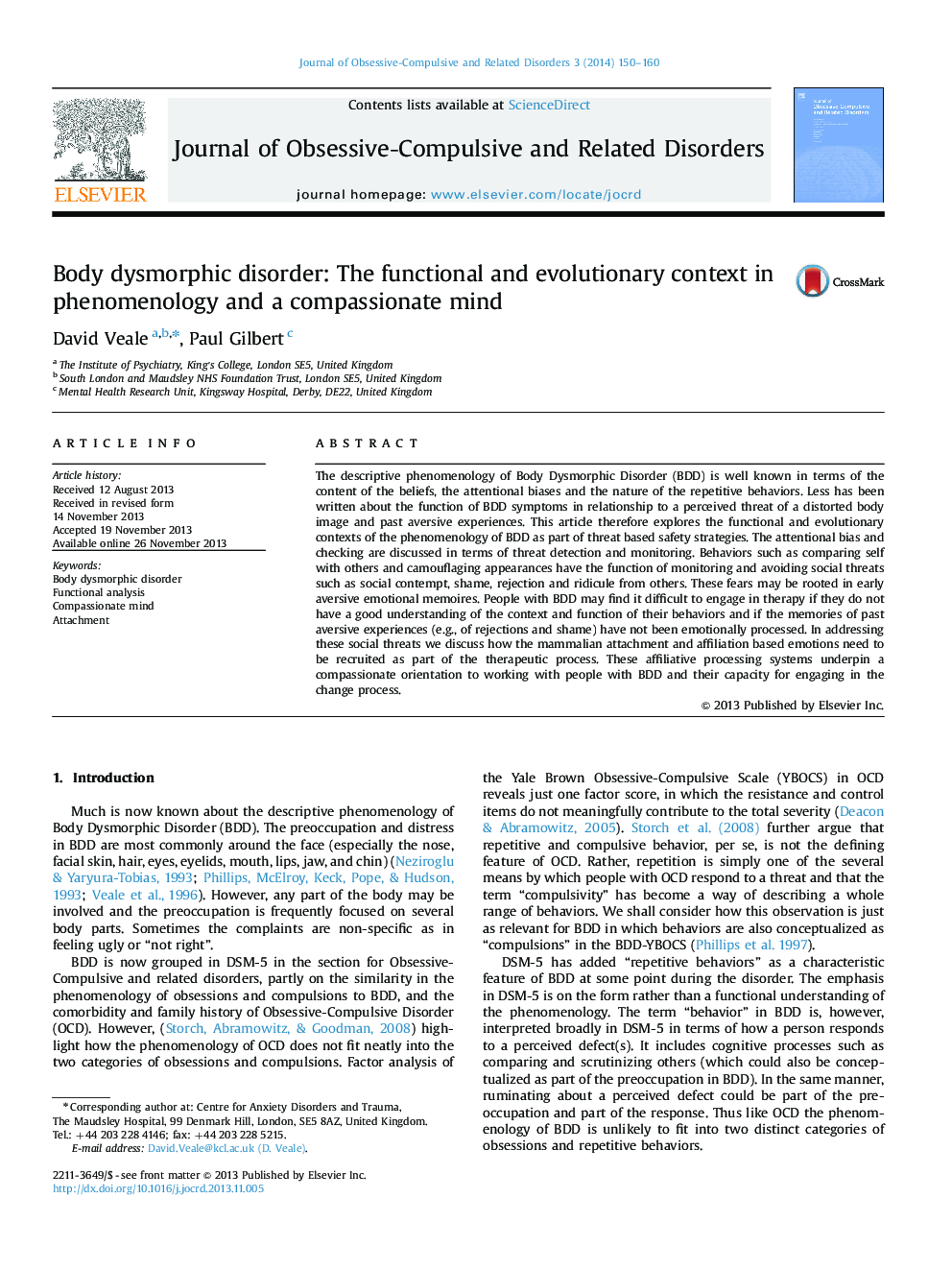| کد مقاله | کد نشریه | سال انتشار | مقاله انگلیسی | نسخه تمام متن |
|---|---|---|---|---|
| 912256 | 918201 | 2014 | 11 صفحه PDF | دانلود رایگان |
• The function and context of the repetitive behavior in BDD is described.
• Attentional bias and checking is described in terms of threat detection.
• Comparing and camouflaging is described in terms of avoidance of threat.
• The use of a compassionate mind has potential for regulating the threat system in BDD.
The descriptive phenomenology of Body Dysmorphic Disorder (BDD) is well known in terms of the content of the beliefs, the attentional biases and the nature of the repetitive behaviors. Less has been written about the function of BDD symptoms in relationship to a perceived threat of a distorted body image and past aversive experiences. This article therefore explores the functional and evolutionary contexts of the phenomenology of BDD as part of threat based safety strategies. The attentional bias and checking are discussed in terms of threat detection and monitoring. Behaviors such as comparing self with others and camouflaging appearances have the function of monitoring and avoiding social threats such as social contempt, shame, rejection and ridicule from others. These fears may be rooted in early aversive emotional memoires. People with BDD may find it difficult to engage in therapy if they do not have a good understanding of the context and function of their behaviors and if the memories of past aversive experiences (e.g., of rejections and shame) have not been emotionally processed. In addressing these social threats we discuss how the mammalian attachment and affiliation based emotions need to be recruited as part of the therapeutic process. These affiliative processing systems underpin a compassionate orientation to working with people with BDD and their capacity for engaging in the change process.
Journal: Journal of Obsessive-Compulsive and Related Disorders - Volume 3, Issue 2, April 2014, Pages 150–160
